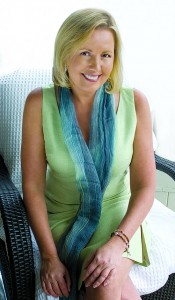 Universal Companies Founder Marti Morenings learned how to run a company from the ground up, beginning in 1982 with a business she and her father created. In the late 1980′s the company began to distribute skin care and esthetics products, and in 1991 Marti created the first company catalog and one-stop-shop for estheticians and spas around the world. Since then, she has developed several proprietary brands and created strategic alliances with well-known brands.
Universal Companies Founder Marti Morenings learned how to run a company from the ground up, beginning in 1982 with a business she and her father created. In the late 1980′s the company began to distribute skin care and esthetics products, and in 1991 Marti created the first company catalog and one-stop-shop for estheticians and spas around the world. Since then, she has developed several proprietary brands and created strategic alliances with well-known brands.
In 2006, Marti served on the Travel and Tourism Panel for the 21st Annual Entrepreneurship Conference at Harvard Business School. Day Spa Association and the International Medical Spa Association also named Marti the 2007 Spa Philanthropist of the Year in 2007 for her success raising funds to benefit breast cancer awareness.
 Brian Paris joined Universal Companies in January 2009 and has developed his projects using Universal Companies’ Equipment Services for over 12 years. Brian contributes over 20 years of design, development, consulting, and FF&E sourcing experience, including 14 years devoted to the spa, medical, and hotel/resort industries. He is a specialist in the areas of spa development, design, and sourcing for spa owners, hotel/resort companies, developers, architects, and medical spas.
Brian Paris joined Universal Companies in January 2009 and has developed his projects using Universal Companies’ Equipment Services for over 12 years. Brian contributes over 20 years of design, development, consulting, and FF&E sourcing experience, including 14 years devoted to the spa, medical, and hotel/resort industries. He is a specialist in the areas of spa development, design, and sourcing for spa owners, hotel/resort companies, developers, architects, and medical spas.
During his years as a spa consultant, Brian served as Corporate Operations Manager for LaBelle Spas and was later recruited by actor Robert Redford for the conception, creation, and development of his signature project, The Spa at Sundance Resort, which has been featured in Bernard Burt’s spa industry review “100 Best Spas of the World.” His most recent project clients include Viceroy Hotels & Resorts, Rosewood Hotels & Resorts, Blissworld, Trump Hotels, AM Resorts, Disney Resorts, Norwegian Cruise Lines, and many more throughout the world.
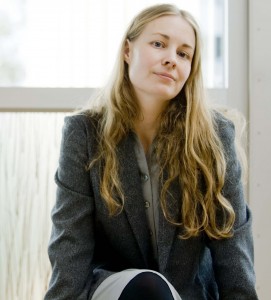 Specializing in cosmetic chemistry, Lisa Sykes works closely with our product development team and vendor partners on green product selection and personal care formulations. When she isn’t researching and analyzing ingredient declarations, she writes informative articles on sustainable living and wellness.
Specializing in cosmetic chemistry, Lisa Sykes works closely with our product development team and vendor partners on green product selection and personal care formulations. When she isn’t researching and analyzing ingredient declarations, she writes informative articles on sustainable living and wellness.
An organic gardener, experienced writer, and vegetarian cook, Lisa has a master’s degree in English and a certificate in sustainability studies from University of Massachusetts-Dartmouth. She is co-chair of the Green Spa Network personal care product committee and serves on its advisory council.
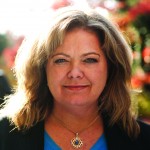 Nancy Griffin has been a recognized marketing expert in the spa industry for more than 15 years. Prior to founding Spatrade.com and Spaexec, she completed graduate studies at Cornell University Hotel School. Her newest venture, Contento Marketing, helps spa and wellness businesses take advantage of new media. Griffin can be reached at nancy@contentomarketing.com.
Nancy Griffin has been a recognized marketing expert in the spa industry for more than 15 years. Prior to founding Spatrade.com and Spaexec, she completed graduate studies at Cornell University Hotel School. Her newest venture, Contento Marketing, helps spa and wellness businesses take advantage of new media. Griffin can be reached at nancy@contentomarketing.com.
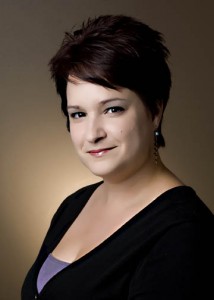 Jenny Farrand joined the Universal Companies team in February 2011 as the National Education and Training Director. She began working in the spa industry over twelve years ago as an esthetician and massage therapist and eventually owned and operated a small New England day spa before joining the world of resort spa management. Working with both Orient Express Hotels and The West Paces Hotel Group, she gained powerful insight into creating and executing the five star spa experience. Building on extensive insight gained through planning, staffing, and training teams for spa opening launches at four properties, Jenny assists Universal Companies customers with product knowledge, hands-on training, menu design, and treatment protocol creation. You can reach Jenny at jfarrand@universalcompanies.com .
Jenny Farrand joined the Universal Companies team in February 2011 as the National Education and Training Director. She began working in the spa industry over twelve years ago as an esthetician and massage therapist and eventually owned and operated a small New England day spa before joining the world of resort spa management. Working with both Orient Express Hotels and The West Paces Hotel Group, she gained powerful insight into creating and executing the five star spa experience. Building on extensive insight gained through planning, staffing, and training teams for spa opening launches at four properties, Jenny assists Universal Companies customers with product knowledge, hands-on training, menu design, and treatment protocol creation. You can reach Jenny at jfarrand@universalcompanies.com .
 With graduate studies in marketing and economics at Sciences Po in Paris, Marylise Sauliere moved to Athens, Greece 20 years ago to pursue a career in marketing.
With graduate studies in marketing and economics at Sciences Po in Paris, Marylise Sauliere moved to Athens, Greece 20 years ago to pursue a career in marketing.
Having acquired a rich experience in market research for the tourism and cosmetics industries and having received specific training and seminars for several years, it was only natural that Marylise become a spa industry specialist. She currently does spa consulting for many of the premier hotel spas throughout Greece and is co-founder of popular spa website SpaMind.gr.
![ada polla[1]](http://spa-insider.com/wp-content/uploads/2011/05/ada-polla1-277x300.jpg)
Ada Polla is the co-creator of the Swiss antioxidant skin care line Alchimie Forever. She launched this high end line of 16 products in the US in 2004 and has expanded her company’s global visibility and distribution during the past 6 years. Her strategic focus and implementation have yielded double-digit annual revenue growth for the company. She has secured partnerships with exclusive spas, specialty boutiques, and cosmetic dermatologists (US, Switzerland, France), as well as with Universal Companies as the brand’s exclusive North American distributor.
Ada has professional consulting experience (DiamondCluster International) and product management expertise in the medical device industry (Candela Corporation).
Her industry involvement ranges from being a founding member of the Washington Spa Alliance (and its elected Treasurer) to being the Treasurer of Fashion GroupInternational of Washington DC. Ada also serves as a committee member of the International Spa Association, contributes to numerous magazines, and frequents leading universities and industry conferences as a guest speaker. She was featured on the cover of Business Week Small Biz and was a nominee for the Emerging Entrepreneur of the Year award for Entrepreneur Magazine.
Ada’s community involvement ranges from entrepreneurial ventures (she is the founderof the Network of Entrepreneurial Women and on the board of DC Coalition forCapital and involved in NFTE) to artistic (Corcoran Gallery of Art) and environmental (Arbor Day Foundation) interests.
Ada graduated in the top 5% of her MBA class at Georgetown University in 2004. She majored in art history and political science at Harvard University and graduated Magna Cum Laude with a Bachelor of Arts degree in 1999.
Alchimie Forever blog: www.alchimie-forever.com/blog/
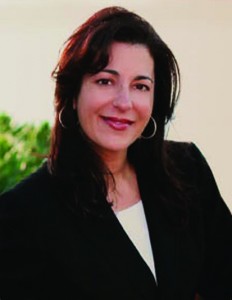
Ellen Clark, Owner and President of Control Corrective Skincare Systems, has over 20 years of skincare knowledge and advanced practical experience. Before launching her clinical skincare line, she owned two skincare clinics that specialized in treating problem skin, as well as her own skincare distribution company. Seeing the need for an advanced skincare line that was also easy to use, she developed Control Corrective Skincare Systems, a line that offers affordable, highly active formulations that are easy to incorporate as a primary or supplementary skincare line.
Ellen Clark holds a bachelor’s degree in English Literature and Marketing, and a master’s degree in Counseling and Psychology. Also a licensed esthetician, Ellen Clark specializes in working with salons, medical practices, and day spas looking to expand into corrective treatments. Having taught advanced esthetics for over a decade, she is an experienced lecturer, author, and educator, and is a member of the National Association of Women Business Owners.
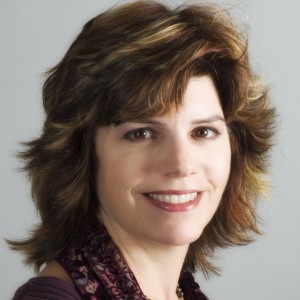
Lisa Starr has over 30 years’ experience in the spa & beauty industry, starting as a technician and currently as a consultant, writer and educator. As the senior consultant for Wynne Business, she has overseen dozens of startup projects for hotel, hospital, medical, fitness, day and salon spas within the US and Asia. Her expertise includes business operations and finances, marketing and advertising, inventory management, human resource development, and business process improvement. She is a popular and top-rated speaker at trade events such as ISPA, IECSC, and SpaAsia Wellness Summit, and is a frequent contributor to industry trade publications. She is currently the Community Ambassador and lead blogger for GramercyOne www.gramercyone.com/blog.
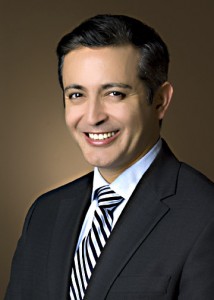 Executive Vice President of Universal Companies Alfredo Carvajal
Executive Vice President of Universal Companies Alfredo Carvajal
joined Universal Companies in June 2008. He has over 20 years of experience in hotel and spa operations, management, service development, and strategic planning to the organization. As a Executive Vice President, Alfredo oversees Universal Companies’ Sales and Operations departments, and is responsible for developing the domestic and international resort and day spa market segments.
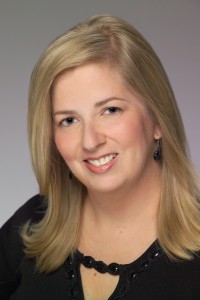 Felicia Brown, LMBT is the owner of Spalutions, a firm that provides business and marketing coaching programs and products for massage, spa and wellness professionals, and is passionate about inspiring others to succeed in their lives and careers. With appearances at many state, national and international industry conferences, Felicia is a sought-after speaker and educator. She has written for numerous trade publications including DAYSPA, Spa Magazine, Skin, Inc., Massage Therapy Journal, Massage Magazine, Massage & Bodywork, Spa Management Journal, Spa Business and Dermascope. She is also a licensed massage therapist, Certified Guerrilla Marketing Coach and NCBTMB Approved Provider. You can find Felicia on facebook, twitter, YouTube, LinkedIn, and www.spalutions.com.
Felicia Brown, LMBT is the owner of Spalutions, a firm that provides business and marketing coaching programs and products for massage, spa and wellness professionals, and is passionate about inspiring others to succeed in their lives and careers. With appearances at many state, national and international industry conferences, Felicia is a sought-after speaker and educator. She has written for numerous trade publications including DAYSPA, Spa Magazine, Skin, Inc., Massage Therapy Journal, Massage Magazine, Massage & Bodywork, Spa Management Journal, Spa Business and Dermascope. She is also a licensed massage therapist, Certified Guerrilla Marketing Coach and NCBTMB Approved Provider. You can find Felicia on facebook, twitter, YouTube, LinkedIn, and www.spalutions.com.
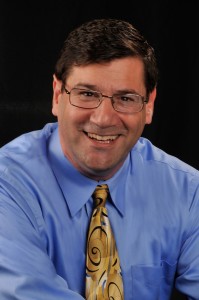 Monte Zwang is a principal of Wellness Capital Management, providing cash flow and financial strategies to businesses in the wellness industry including medical practices, wellness practitioners and spas. Monte has been a consultant for more than 25 years, teaching business planning and cash flow management. Zwang negotiates sales, acquisitions and merger transactions. He is active in the Day Spa and International Medical Spa Association and spearheads their research projects. A graduate of Denver University Daniels School of Business, Zwang has been honored by Seattle Magazine as a Five Star Best in Client Satisfaction Wealth Manager for 2009 and 2010. For more information visit: www.WellnessCapital.com
Monte Zwang is a principal of Wellness Capital Management, providing cash flow and financial strategies to businesses in the wellness industry including medical practices, wellness practitioners and spas. Monte has been a consultant for more than 25 years, teaching business planning and cash flow management. Zwang negotiates sales, acquisitions and merger transactions. He is active in the Day Spa and International Medical Spa Association and spearheads their research projects. A graduate of Denver University Daniels School of Business, Zwang has been honored by Seattle Magazine as a Five Star Best in Client Satisfaction Wealth Manager for 2009 and 2010. For more information visit: www.WellnessCapital.com
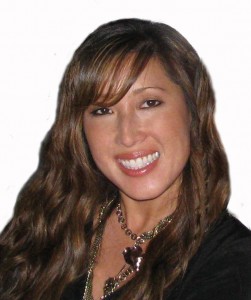 A Regional Account Manager for Universal Companies, Lisa Michaelis contributes over 19 years experience in sales, business development, and marketing in the computer, fashion, and gift industries. Most recently, the last 5 years in the spa/resort industry with a specialty in spa retail and merchandising. Known for her personable nature and her highly consultative approach, she engages with her clients to analyze business processes, identify needs, create solutions, and offer value propositions. In addition, she has owned several clothing and gift businesses and has a 360 degree perspective and entrepreneurial enthusiasm. Lisa is always looking for innovative ideas that will positively impact many areas of spa business.
A Regional Account Manager for Universal Companies, Lisa Michaelis contributes over 19 years experience in sales, business development, and marketing in the computer, fashion, and gift industries. Most recently, the last 5 years in the spa/resort industry with a specialty in spa retail and merchandising. Known for her personable nature and her highly consultative approach, she engages with her clients to analyze business processes, identify needs, create solutions, and offer value propositions. In addition, she has owned several clothing and gift businesses and has a 360 degree perspective and entrepreneurial enthusiasm. Lisa is always looking for innovative ideas that will positively impact many areas of spa business.
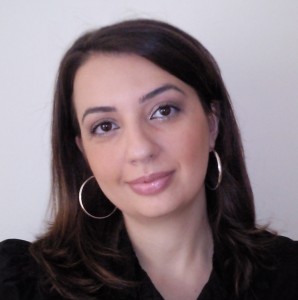 After completing a degree in economics at the University of California and working in the banking and real estate industries in the US, Toula Victor relocated to Athens, Greece in 2008 and began writing for Athens Insider magazine. Her monthly spa column and extensive travels throughout the United States, Mexico, and The Caribbean in search of the perfect spa inspired her to launch the popular spa blog SpaMind.gr .
After completing a degree in economics at the University of California and working in the banking and real estate industries in the US, Toula Victor relocated to Athens, Greece in 2008 and began writing for Athens Insider magazine. Her monthly spa column and extensive travels throughout the United States, Mexico, and The Caribbean in search of the perfect spa inspired her to launch the popular spa blog SpaMind.gr .
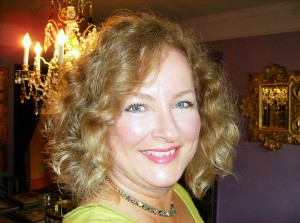 Spas2b is a full-service spa business development, consulting, and training company based in Ontario, Canada, drawing on the extensive experience of its President, Leslie Lyon. Leslie has evolved with the health and beauty industry for more than 30 years, participating in many aspects of the spa trade, today enjoying per profession as an international consultant, educator, speaker, published columnist, and freelance writer. Leslie is also an advisor for numerous committees and associations throughout North America. Specializing in online distance education, Spas2b in now recognized in 49 countries around the world and growing. www.spas2b.com
Spas2b is a full-service spa business development, consulting, and training company based in Ontario, Canada, drawing on the extensive experience of its President, Leslie Lyon. Leslie has evolved with the health and beauty industry for more than 30 years, participating in many aspects of the spa trade, today enjoying per profession as an international consultant, educator, speaker, published columnist, and freelance writer. Leslie is also an advisor for numerous committees and associations throughout North America. Specializing in online distance education, Spas2b in now recognized in 49 countries around the world and growing. www.spas2b.com
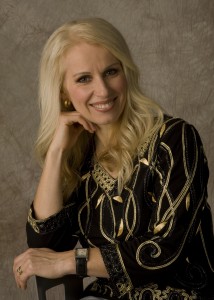 Morag Currin, President of Touch for Cancer Online, is a highly sought-after esthetics educator with over 16 years of spa industry experience and more than 7 years in training and training management. Recognizing the lack of specialized skin care available for people undergoing cancer therapies, she has pioneered an Oncology Esthetics Certification for licensed estheticians, and has written a text book on the subject. Her students learn to incorporate massage techniques specifically for people undergoing cancer therapies, screen for skin cancerous lesions, and bring cancer survivors’ skins back into balance. Morag has travelled around the globe with her training and expertise, helping to raise the bar in the spa industry, and opening the door to all peoples, regardless of skin type or health condition. www.touchforcanceronline.com
Morag Currin, President of Touch for Cancer Online, is a highly sought-after esthetics educator with over 16 years of spa industry experience and more than 7 years in training and training management. Recognizing the lack of specialized skin care available for people undergoing cancer therapies, she has pioneered an Oncology Esthetics Certification for licensed estheticians, and has written a text book on the subject. Her students learn to incorporate massage techniques specifically for people undergoing cancer therapies, screen for skin cancerous lesions, and bring cancer survivors’ skins back into balance. Morag has travelled around the globe with her training and expertise, helping to raise the bar in the spa industry, and opening the door to all peoples, regardless of skin type or health condition. www.touchforcanceronline.com
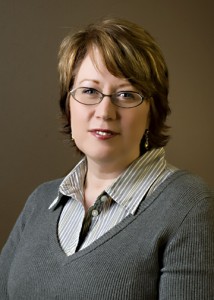
Susan Link has been a corporate copywriter with Universal Companies since 2005, writing and editing creative marketing content for business and consumer audiences in the spa industry. She has also developed an extensive network of relationships with the spa trade press through Universal Companies’ public relations program. Susan is a graduate ofRadford University, where she earned her B.S. degree in Journalism and Sociology.
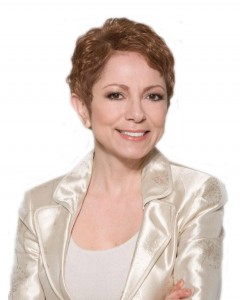 Dori Soukup is the founder and CEO of InSPAration Management, a firm specializing in spa business development, advanced education, and BizTools.
Dori Soukup is the founder and CEO of InSPAration Management, a firm specializing in spa business development, advanced education, and BizTools.
Over the past 12 years, Dori has contributed to the success of spa companies worldwide. Her work encompassesconsulting, coaching and educating spa entrepreneurs, executives and leaders globally. Major brands such as Pevonia Botanica, Sandals & Beaches Resorts, Massage Envy, Lifetime Fitness & Spa, and more have benefited from her expertise.
Dori’s passion is developing innovative, effective educational programs and business strategies leading to exponential growth and profits! She delivers clear, concise blueprints with easy to implement methods addressing challenges and insuring success.
Prior to her current venture, Dori held key leadership positions in the hospitality industry for 18 years, her last role as VP of Sales for Wyndham Resorts.
She is the recipient of the American Spa Preferred Educator award and is a sought after speaker within the spa and wellness industry. Dori is a published author, her articles and insights are featured in national and international trade publications.
www.inSPArationManagement.com
 Stacy Conlon has been in the sales and marketing field for over a decade in the hospitality industry. Currently, she is a social media marketing strategist for the spa and wellness industries as well as a Certified Wellness Coach. Stacy is passionate about helping people connect the dots in their work and personal lives, and facilitates the creation and follow-through of a SMART action plan in order to achieve their goals. Combining her unique skill set as a marketer, educator and coach, Stacy also creates customized wellness programs for spas and other wellness-minded corporations. She is a professional blogger, writer and VP of Marketing for a start-up called SpaSmart, an online training solution for spas and resource partners.
Stacy Conlon has been in the sales and marketing field for over a decade in the hospitality industry. Currently, she is a social media marketing strategist for the spa and wellness industries as well as a Certified Wellness Coach. Stacy is passionate about helping people connect the dots in their work and personal lives, and facilitates the creation and follow-through of a SMART action plan in order to achieve their goals. Combining her unique skill set as a marketer, educator and coach, Stacy also creates customized wellness programs for spas and other wellness-minded corporations. She is a professional blogger, writer and VP of Marketing for a start-up called SpaSmart, an online training solution for spas and resource partners.
Website: www.thezengirl.com
Blog: www.zenfriend.org
Twitter: @TheZenGirl
Email: stacy@thezengirl.com
 Peggy Wynne Borgman is the President of Preston Wynne, Inc. founded in 1984, which operates award-winning Preston Wynne Spa in the San Francisco Bay Area, Wynne Business, its fifteen year old spa consulting division. Clients have included Hyatt Hotels, Coldwater Creek Spas, Langham Hotels International, MGM Mirage, eleven spa, Glen Ivy Hot Springs Spas, and Gold’s Gym.
Peggy Wynne Borgman is the President of Preston Wynne, Inc. founded in 1984, which operates award-winning Preston Wynne Spa in the San Francisco Bay Area, Wynne Business, its fifteen year old spa consulting division. Clients have included Hyatt Hotels, Coldwater Creek Spas, Langham Hotels International, MGM Mirage, eleven spa, Glen Ivy Hot Springs Spas, and Gold’s Gym.
Through its acclaimed Spa Directors Management Intensive Seminar, Wynne Business has trained management employees for the top tier of the international hospitality industry, including Ritz Carlton, Four Seasons,Stillwaterby Hyatt, Peninsula Hotels and Shangri-La.
Ms. Borgman is a columnist for American Spa magazine whose commentary on the industry has been featured in USA Today, The Wall Street Journal, Fortune Small Business and Time Magazine. She is a licensedCalifornia esthetician and author of a consumer beauty book inspired by the principles of Traditional Chinese Medicine.
A member of the board of directors for Next Door Solutions, a domestic violence agency inSan Jose,California, Ms. Borgman was recognized as a 2009 Distinguished Volunteer Fundraiser by the Association of Fundraising Professionals, and in 2010, was honored as one of the Top 100 Most Influential Women by the Silicon Valley Business Journal.
Contact Peggy Wynne Borgman via pwb@wynnebusiness.com and www.wynnebusiness.com .
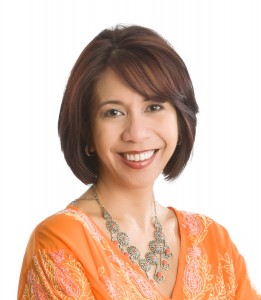 Rianna Riego, Principal of Global SpaVantage, has consulted for and opened several spas ranging from day spas and club/membership spas, to urban hotel spas, resort boutique and mega spas. In the course of her work with the Marriott International and KSL resort groups, she established corporate spa & retail standards, individual spa identity and branding, and assisted in pre-opening/operations, set-up and training of various spa directors in operational and financial management.
Rianna Riego, Principal of Global SpaVantage, has consulted for and opened several spas ranging from day spas and club/membership spas, to urban hotel spas, resort boutique and mega spas. In the course of her work with the Marriott International and KSL resort groups, she established corporate spa & retail standards, individual spa identity and branding, and assisted in pre-opening/operations, set-up and training of various spa directors in operational and financial management.
Known in the industry for her resourcefulness and attention to detail, ability to streamline operations and increase profit margins, passion to create and maintain high service standards, and an ability to influence and develop future leaders of the industry, Rianna brings a dedication for recommendations based on current best practices and years of personal and professional experience.
Rianna is also dedicated to sustainability and currently serves as a Director on the Board of the Green Spa Network. You may contact Rianna via her website: http://www.globalspavantage.com/
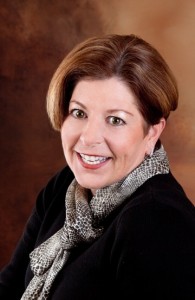 Patti Biro is the owner and founder of Patti Biro and Associates, a consulting firm specializing in planning and providing innovative continuing education in the spa and wellness industry. She is a frequent presenter on the regional, national and international circuit. She can be reached at info@pattibiro.com and www.pattibiro.com .
Patti Biro is the owner and founder of Patti Biro and Associates, a consulting firm specializing in planning and providing innovative continuing education in the spa and wellness industry. She is a frequent presenter on the regional, national and international circuit. She can be reached at info@pattibiro.com and www.pattibiro.com .
�
 Jennifer Dickens, founder and creative visionary of Whole Life Marketing, started her healing journey back in 2003. Her overcoming all odds in a self-healing journey created her focus and direction to help create a healthier world by empowering natural health practitioners, spa’s and wellness organizations with the skills and tools to promote, market and sell natural health modalities, products and services.
Jennifer Dickens, founder and creative visionary of Whole Life Marketing, started her healing journey back in 2003. Her overcoming all odds in a self-healing journey created her focus and direction to help create a healthier world by empowering natural health practitioners, spa’s and wellness organizations with the skills and tools to promote, market and sell natural health modalities, products and services.
Whole Life Marketing works with health and wellness spa, Martha’s Vineyard Holistic Retreat; non-profit cancer education organization, Gerson Institute; herbal supplement companies; Dr. Schulze’s American Botanical Pharmacy and Bernard Jensen International; acupuncture and natural health universities, Yo San University andUniversityofNatural Medicine.
Prior to founding Whole Life Marketing, Jennifer had a successful twenty year career in commercial real estate development as Directory of Private Equity and Marketing at RD Olson Development; was the Western Area Marketing Director for a $250 million division of KPMG; and prior to that the Vice President of Sales for Merrill Corporation an International Financial Document Services company securing millions of dollars. Through continually exceeding goals in these sales and marketing roles, Jennifer developed and refined a valuable skill set to assist organizations in increasing sales and to successfully market in highly competitive environments.
Jennifer’s scope of expertise includes Business Plan Development and Success Coaching; Integrated Marketing Plan, Budget Development, and Implementation. The complete oversight of all aspects of the Marketing Operation including: Web Development, Internet Marketing, Search Engine Optimization (SEO), Social Networking, Brand Identity and Marketing Collateral Development, and more.
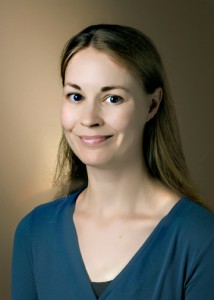

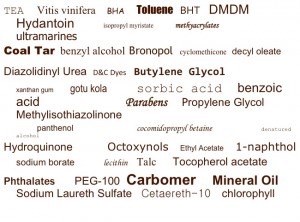
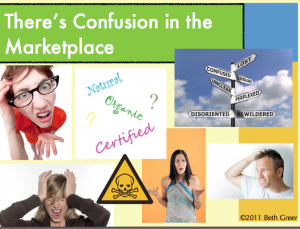
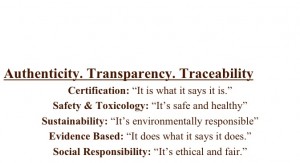


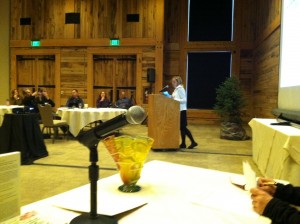






![ada polla[1]](http://spa-insider.com/wp-content/uploads/2011/05/ada-polla1-277x300.jpg)














